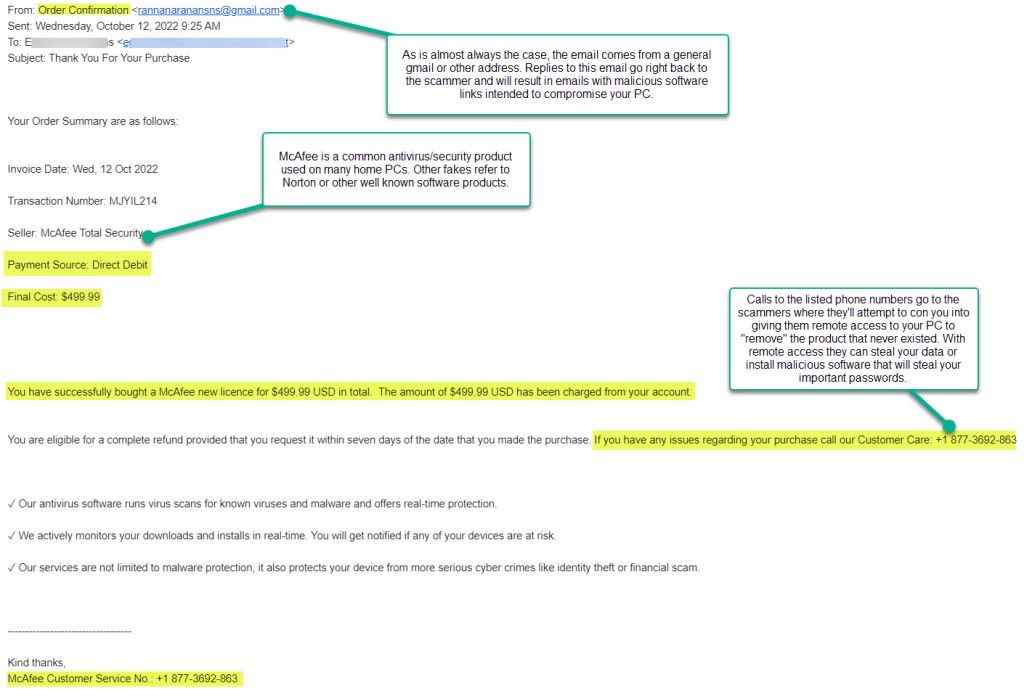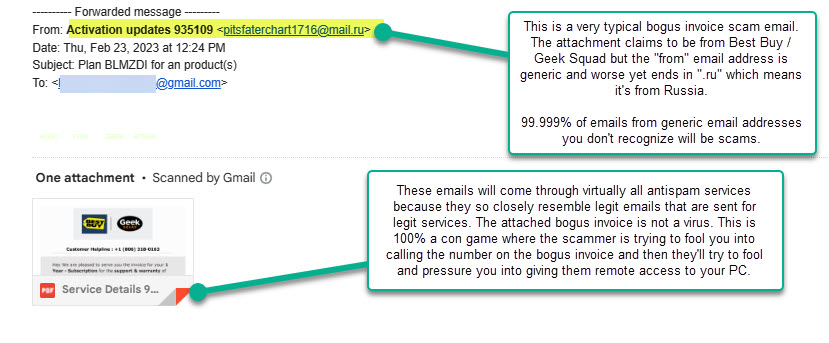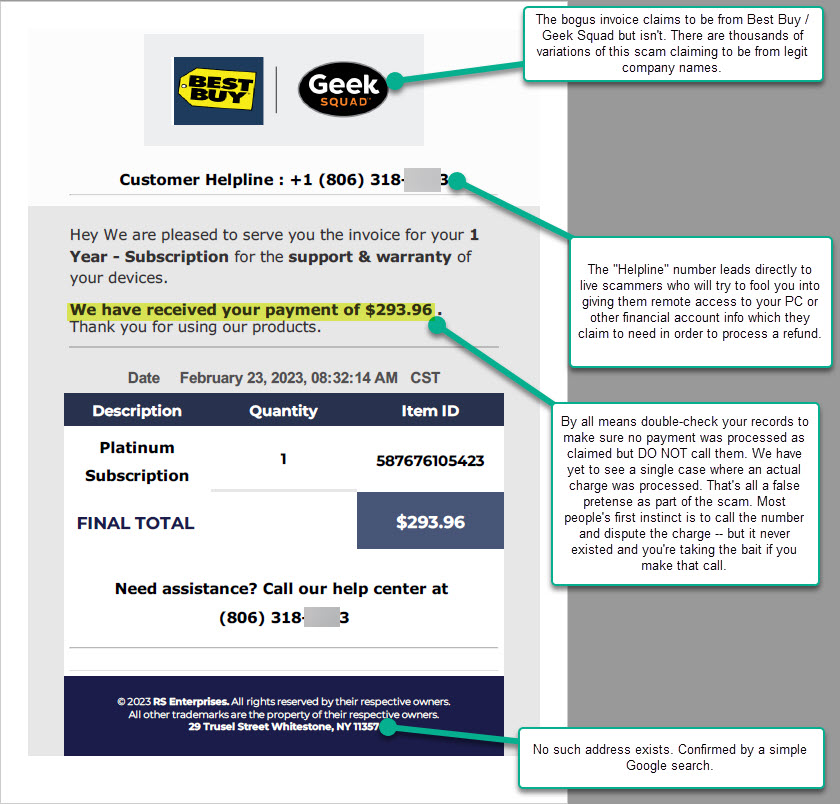Perhaps the most common current scam is the fake order email (or sometimes text). There are thousands of variations but all claim to be confirming some product or service that you didn’t buy. Each one will reference a phone number for you to call if you have any questions about your “order.” That’s where the scam actually begins because if you make the mistake of calling the number – or replying to the email – the scammer will attempt to con you into either giving them remote access to your PC (under the pretense of crediting your “purchase”) or they’ll attempt to direct you to a malicious website (again, under the pretense of a credit or refund).
We’ve seen examples claiming the purchase of virtually every type of product or service including one recent one for several Glock handguns. Most people’s gut instinct is to reply to the email or call the phone number because they’re concerned they’ve been charged wrongly. But we’ve yet to see an example where an actual charge existed. It’s all part of the con to lure you into responding.
We advise our clients to monitor their credit cards and accounts to make sure no actual charge exists but to NOT engage with the scammer in any way. No email reply or phone call. Either is a waste of time that at best will result in further aggravation or at worst lead to a successful scam. In the provided screenshots you’ll see a breakdown of how just a couple of these scams work.



